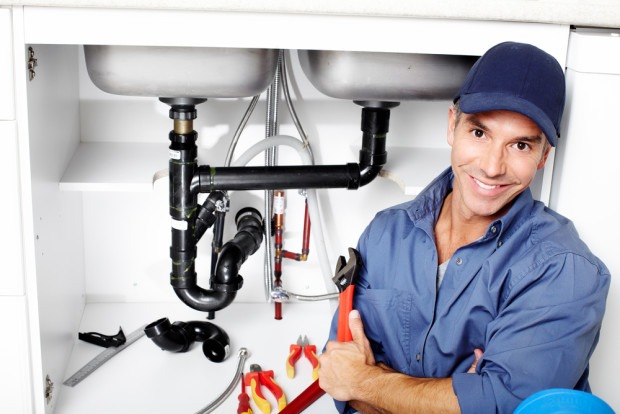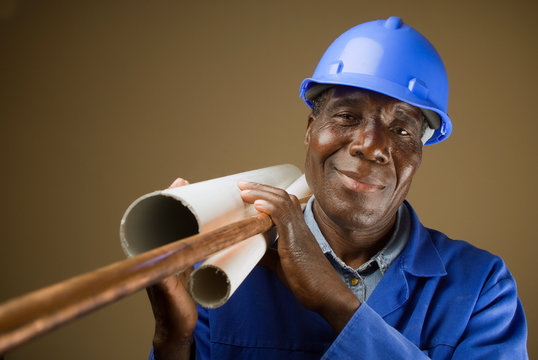Why DIY Isn’t Always Smart: When to Let a Pro Plumber Take Over
Why DIY Isn’t Always Smart: When to Let a Pro Plumber Take Over
Blog Article
Usual Pipes Troubles Every Home Owner Ought To Know
Homeowners often come across a variety of pipes issues that can disrupt day-to-day live. Typical issues include leaking taps, clogged drains, and running commodes. These concerns normally originate from worn-out parts or debris build-up. Additionally, low water pressure and ruptured pipelines can signal deeper issues. Recognizing these challenges is vital for effective maintenance. There are various other less evident worries that can emerge, which warrant closer examination.
Leaky Taps
Dripping taps can be a frustrating annoyance for house owners. These consistent leaks not just develop a frustrating audio yet likewise cause drainage and enhanced utility bills. A leaky tap typically results from worn-out washing machines, O-rings, or seals, which deteriorate gradually because of routine use and exposure to water. Sometimes, the faucet's interior components may be rusted or damaged, necessitating a more comprehensive repair or substitute. Recognizing the resource of the leak is vital; property owners might require to take apart the faucet to examine its components very closely. Regular maintenance can help prevent leakages, including cleansing aerators and examining for signs of wear. Attending to a dripping faucet promptly can save water and reduce costs, making it a manageable yet crucial job for homeowners to take on in keeping their pipes systems successfully. Correct focus to this usual problem can result in an extra comfortable living environment.
Blocked Drains
Many home owners experience the irritation of blocked drains pipes at some time. This usual plumbing problem can arise from different reasons, including the buildup of hair, soap residue, food bits, and oil. These products can create blockages that impede the circulation of water, resulting in slow down water drainage or complete stoppage.In kitchen areas, oil and food scraps are often the perpetrators, while washrooms frequently deal with hair and soap build-up. Normal maintenance, such as using drain strainers and staying clear of pouring fats down the sink, can help stop clogs.When an obstruction does occur, home owners might try to make use of a plunger or a commercial drain cleaner as preliminary treatments. Nonetheless, persistent issues may require expert help to stay clear of damages to pipelines - Plumbing. Recognizing the causes and prevention approaches for clogged drains can save home owners time and cash, ensuring a smoother plumbing experience

Running Commodes
Running toilets are a typical concern that can stem from numerous reasons, including malfunctioning flappers and chain troubles. The continuous running not only drainages however additionally leads to enhanced energy costs. Addressing these issues immediately can prevent further problems and restore effectiveness to the pipes system.
Root Causes Of Running Commodes
A persistent flow of water from a toilet can be both inefficient and annoying, frequently signaling underlying problems within the plumbing system. One common cause is a used flapper shutoff, which may not create a proper seal, permitting water to continually leakage into the dish. In addition, a malfunctioning fill shutoff can result in excessive water flow, contributing to the trouble. Misaligned float systems may likewise create the toilet to run as they stop working to manage the water degree properly. Another possible problem is mineral accumulation, which can obstruct components and impede their performance. Recognizing these causes quickly can help homeowners resolve the issue before it escalates, ensuring efficient operation of their pipes system.
Repercussions of Constant Operating
Although usually overlooked, the effects of a constantly running toilet can significantly influence both water use and family costs. A running toilet can lose approximately 200 gallons of water daily, causing raised water bills and unneeded source consumption. This extreme water use not only strains the family budget yet likewise adds to environmental problems, particularly in areas encountering water shortages. In addition, the constant sound of running water can be a source of inconvenience, disrupting the serenity of the home - Plumber Mississauga. Long term issues may lead to more considerable pipes troubles if left unaddressed, resulting in more economic burdens. Property owners need to recognize the value of timely repairs to minimize these unfavorable results and preserve an effective plumbing system
Dealing With Running Commode Issues
Bathrooms that constantly run can be an irritating problem for property owners, yet recognizing the cause is the initial step toward an efficient solution. Usual causes include a defective flapper, which may not create an appropriate seal, enabling water to get away right into the bowl. Home owners ought to inspect the flapper for wear and replace it if necessary. Additionally, the fill shutoff might be malfunctioning, creating excess water to flow continuously. Changing this part or adjusting might resolve the issue. One more potential culprit is a misaligned float, which can be adjusted to the appropriate elevation. Normal upkeep and timely repair services can protect against running toilets, making certain both water conservation and price savings on utility bills.
Low Tide Pressure
Low water pressure can be a discouraging experience for property owners, usually materializing as a weak stream from taps and showerheads. This issue can originate from numerous reasons, including debris build-up in pipelines, corroded plumbing, or issues with the local water. Home owners might originally see low tide pressure in certain areas of the home, however it can intensify to an extra widespread trouble otherwise addressed promptly.In some instances, malfunctioning stress regulatory authorities can also be in charge of insufficient water flow. Routine upkeep, such as purging the hot water heater and checking for blockages, can help alleviate these concerns. If low water pressure lingers, it might be necessary to get in touch with a professional plumbing to identify and solve the underlying cause. Identifying the source of reduced water pressure is necessary for recovering proper water circulation and Homepage guaranteeing a practical plumbing system.
Burst Pipes
Burst pipelines can be a significant plumbing issue, usually resulting from the exact same aspects that contribute to reduced water stress, such as temperature level fluctuations and aging facilities. When water ices up within pipes, it expands, raising stress till the pipeline can no more include it, bring about a rupture. Additionally, corrosion from extended direct exposure to water can damage pipelines, making them prone to rupturing under typical pressure.Homeowners may notice indications of a burst pipeline with unexpected water leaks, wet spots on wall surfaces or ceilings, and an unexpected boost in their water expense. Immediate action is necessary; falling short to resolve a burst pipeline can cause extensive water damage, mold and mildew development, and costly fixings. Regular inspections and upkeep of plumbing systems can aid avoid this concern. Protecting pipelines in colder areas and changing old piping can substantially lower the risk of burst pipes, guarding the home's plumbing integrity.
Water Heating Unit Issues
How can house owners identify water heater issues before they rise? Normal evaluation and upkeep can help detect potential troubles early. Home owners should try to find signs such as irregular water temperature level, unusual sounds, or a decline in warm water supply. Leaks or pools around the device may indicate a breakdown that requires instant interest. The look of corrosion or debris accumulation can additionally indicate the need for maintenance.Additionally, house owners need to keep track of the age of their hot water heater; most units have a life expectancy of 8 to 12 years. If the heating system is approaching this age and showing indications of wear, it might be time to reflect on replacement. Regular flushing of the tank can stop debris accumulation, prolonging the system's life. By continuing to be alert and dealing with problems without delay, homeowners can avoid expensive fixings and guarantee their water heater runs successfully for years to come.
Sewer Line Troubles
Lots of house owners might run into sewer line issues eventually, influencing their pipes system's overall functionality. Common problems include blockages, tree root invasions, and pipe damages. Blockages usually arise from the build-up of grease, hair, and international items that obstruct the flow of wastewater. Tree roots can penetrate sewer lines, triggering leakages and fractures. Additionally, maturing pipes might wear away or damage, leading to more issues (Drain Services). Signs of drain line trouble consist of slow drains pipes, undesirable smells, and sewage back-ups, which can posture health dangers. Homeowners ought to deal with these issues quickly to stay clear of extensive damages and pricey fixings. Routine maintenance, such as set up examinations and cleaning, can aid avoid substantial issues. In extreme cases, expert intervention might be necessary to repair or replace broken areas of the sewage system line. Recognizing these prospective troubles can aid home owners take proactive measures to keep their pipes systems successfully
Often Asked Concerns
Just How Can I Protect Against Pipes Issues in My Home?
To stop pipes problems, normal maintenance is crucial. Home owners must inspect pipes for leakages, clean drains, and monitor water stress. In addition, enlightening themselves concerning correct use can significantly minimize the danger of future pipes issues.
When Should I Call a Plumbing Professional Instead of Repairing It Myself?
Establishing when to call a plumbing professional frequently depends on the intensity of the concern. Substantial leakages, consistent blockages, or unfamiliar troubles call for specialist assistance, ensuring security and preventing further damage rather than risking individual efforts at fixing.
What Are the Signs of Hidden Pipes Leaks?
Indicators of hidden pipes leakages consist of unusual water costs, wet places on ceilings or wall surfaces, mold growth, and a stuffy odor. These signs commonly suggest underlying issues that call for specialist assessment and fixing for resolution.
Just how Typically Should I Have My Pipes Evaluated?
Regular pipes evaluations are recommended each to two years. This frequency helps recognize potential problems early, description guaranteeing the system stays efficient and lowering the threat of expensive repair services or unexpected emergency situations in the future.
Are There Do It Yourself Solutions for Minor Plumbing Issues?

Report this page